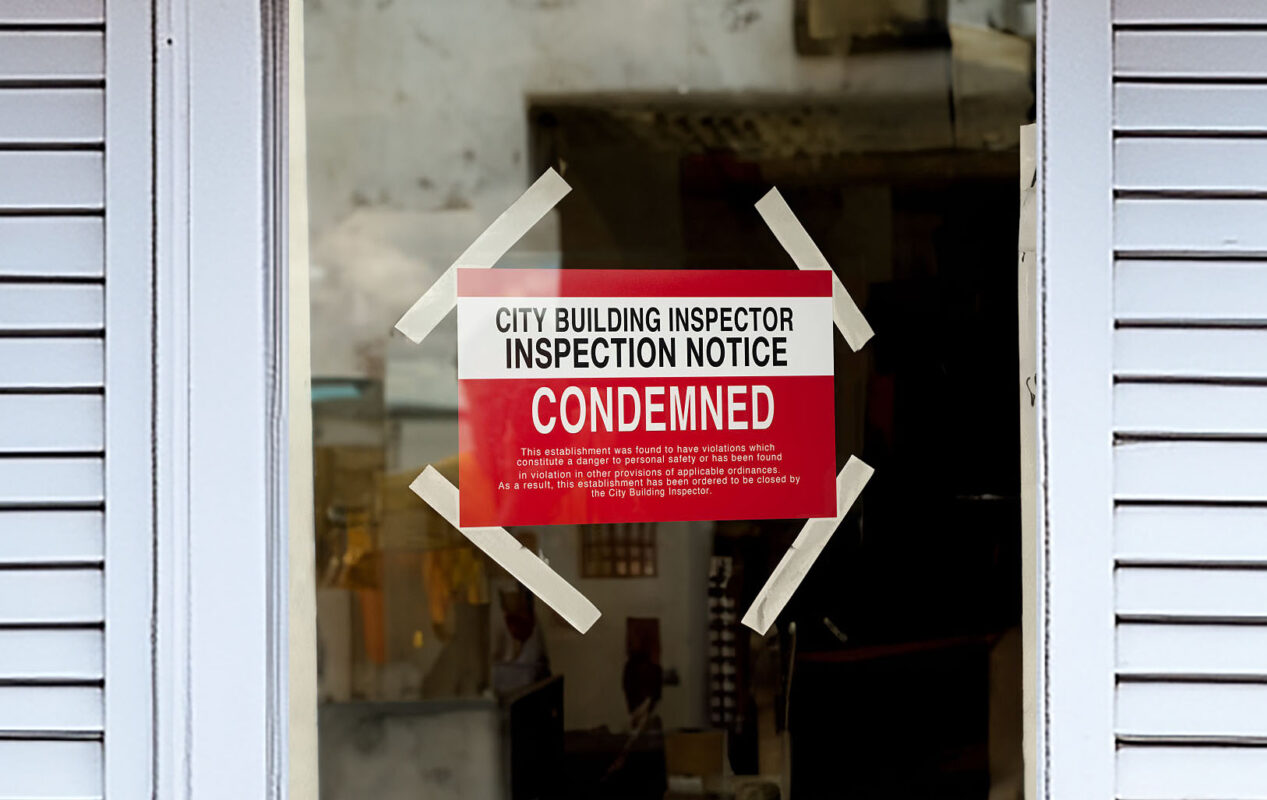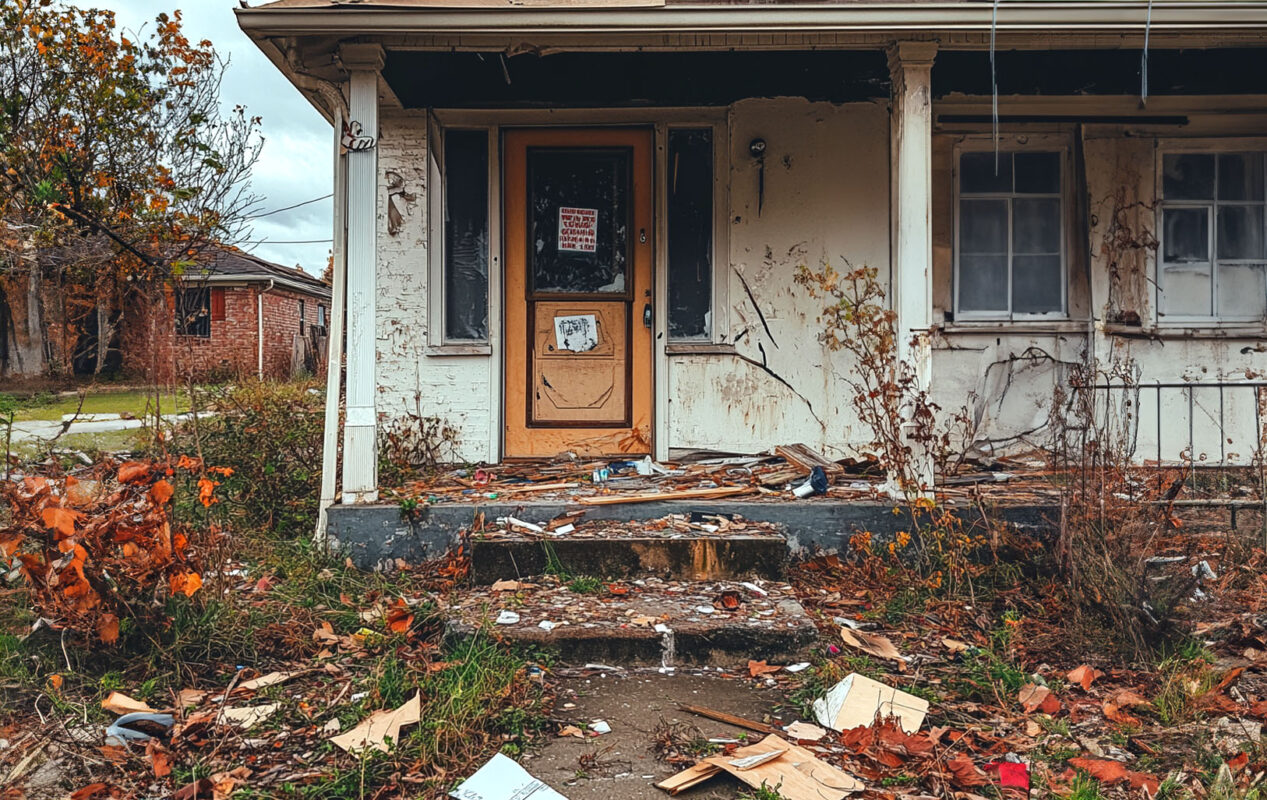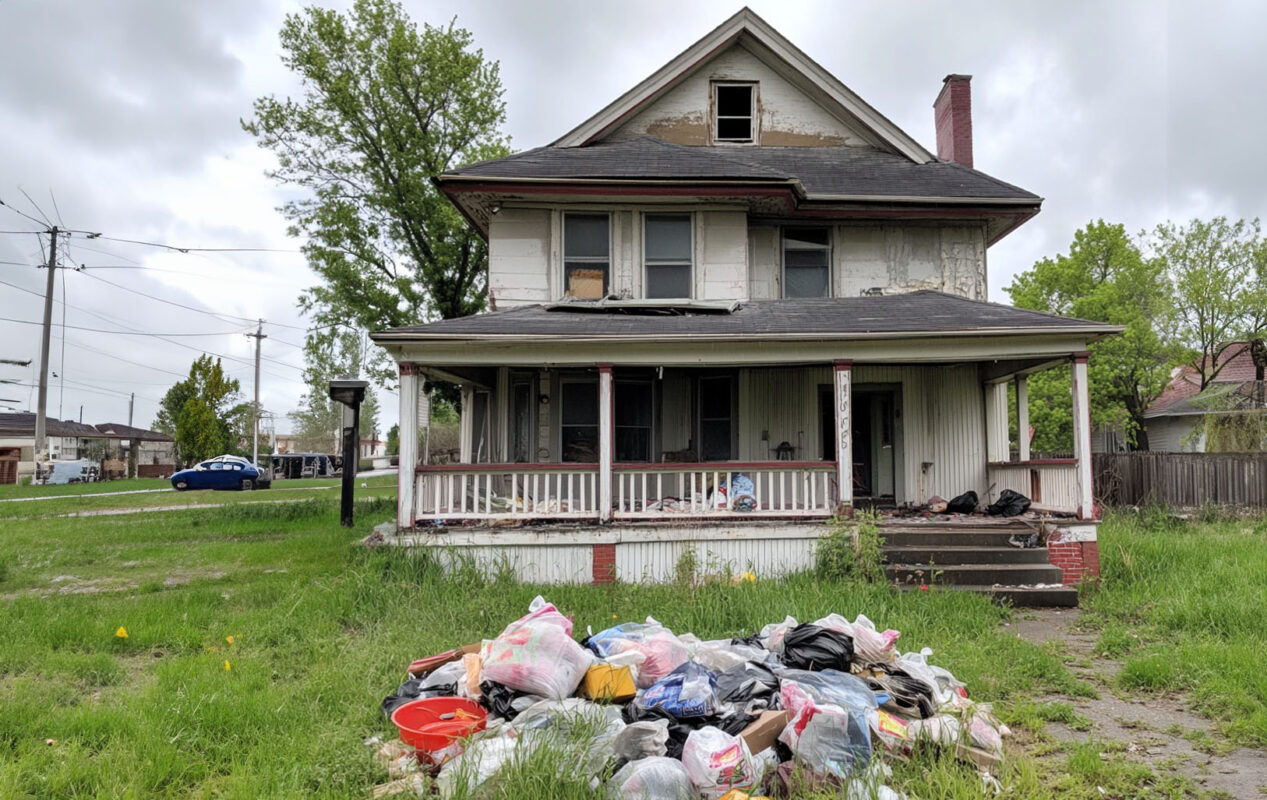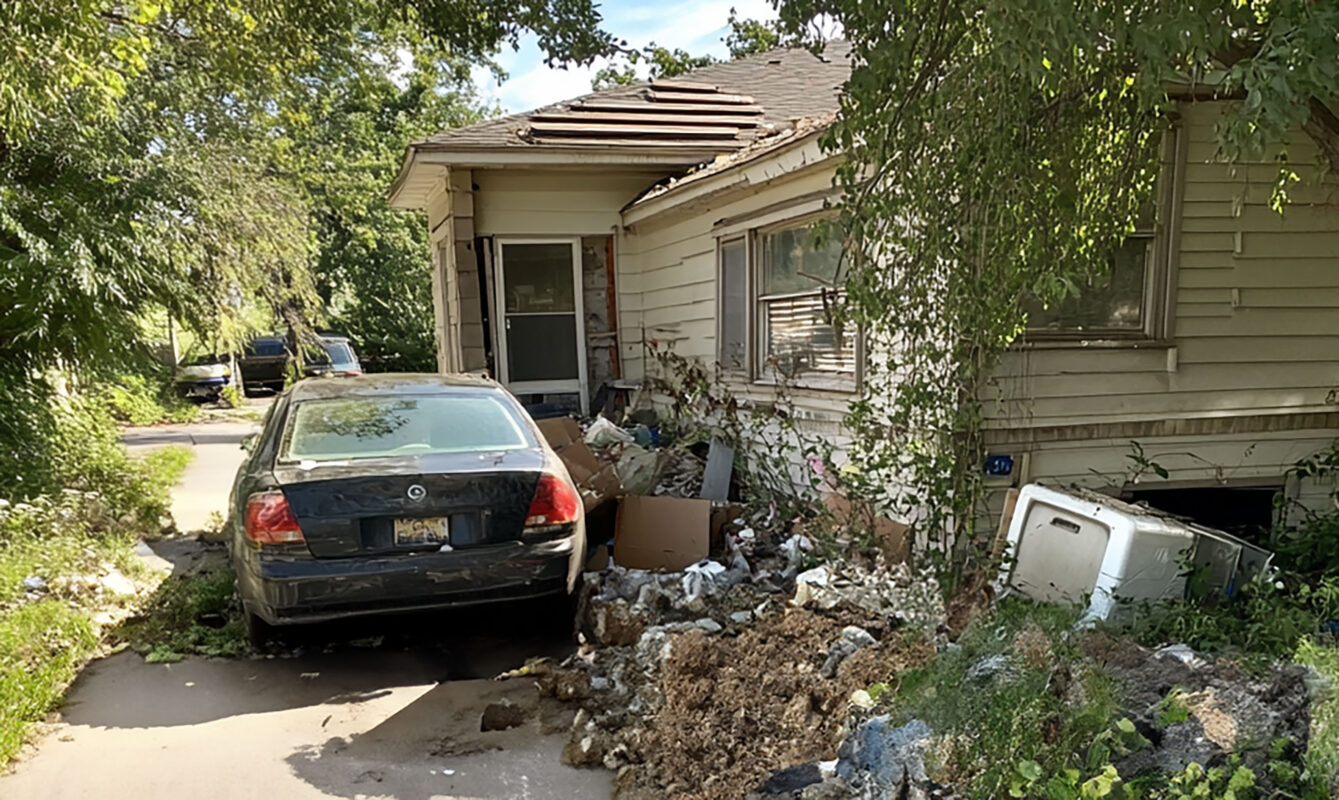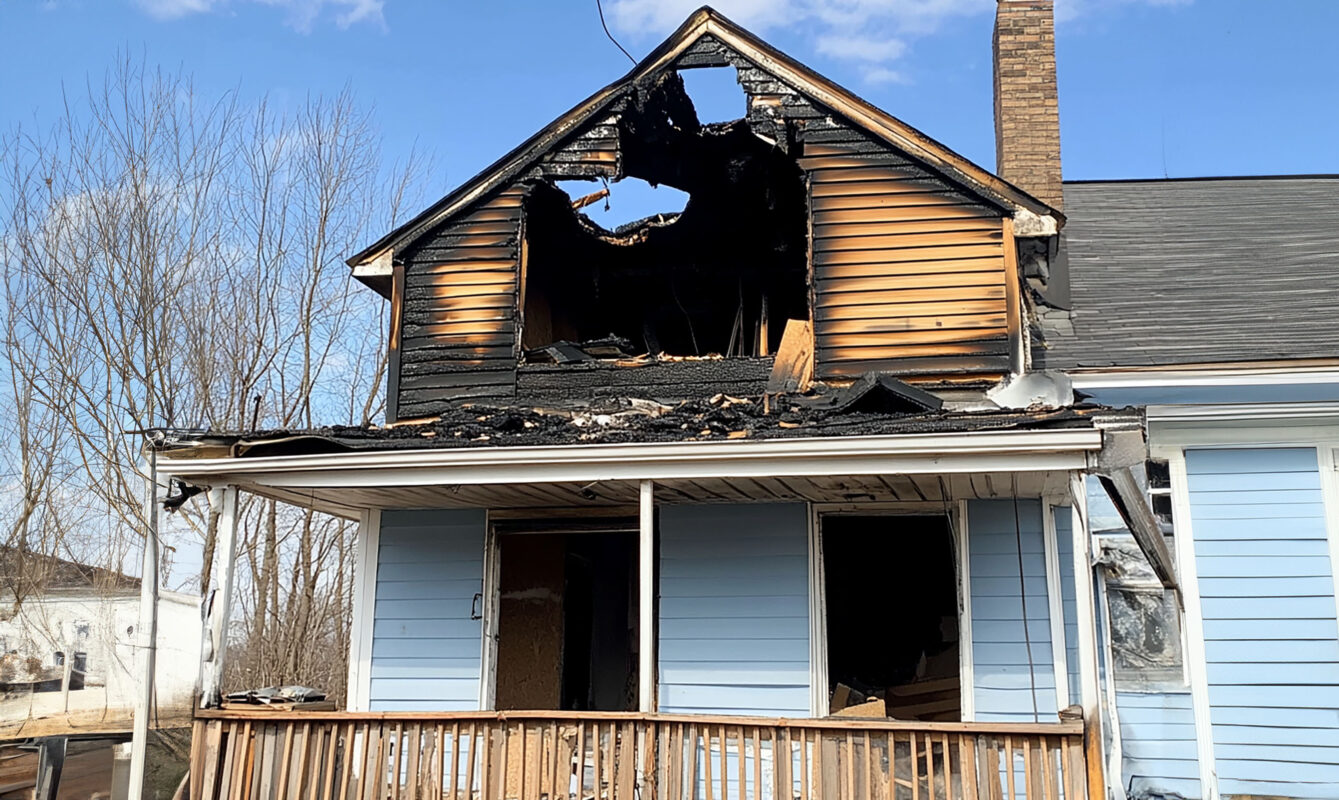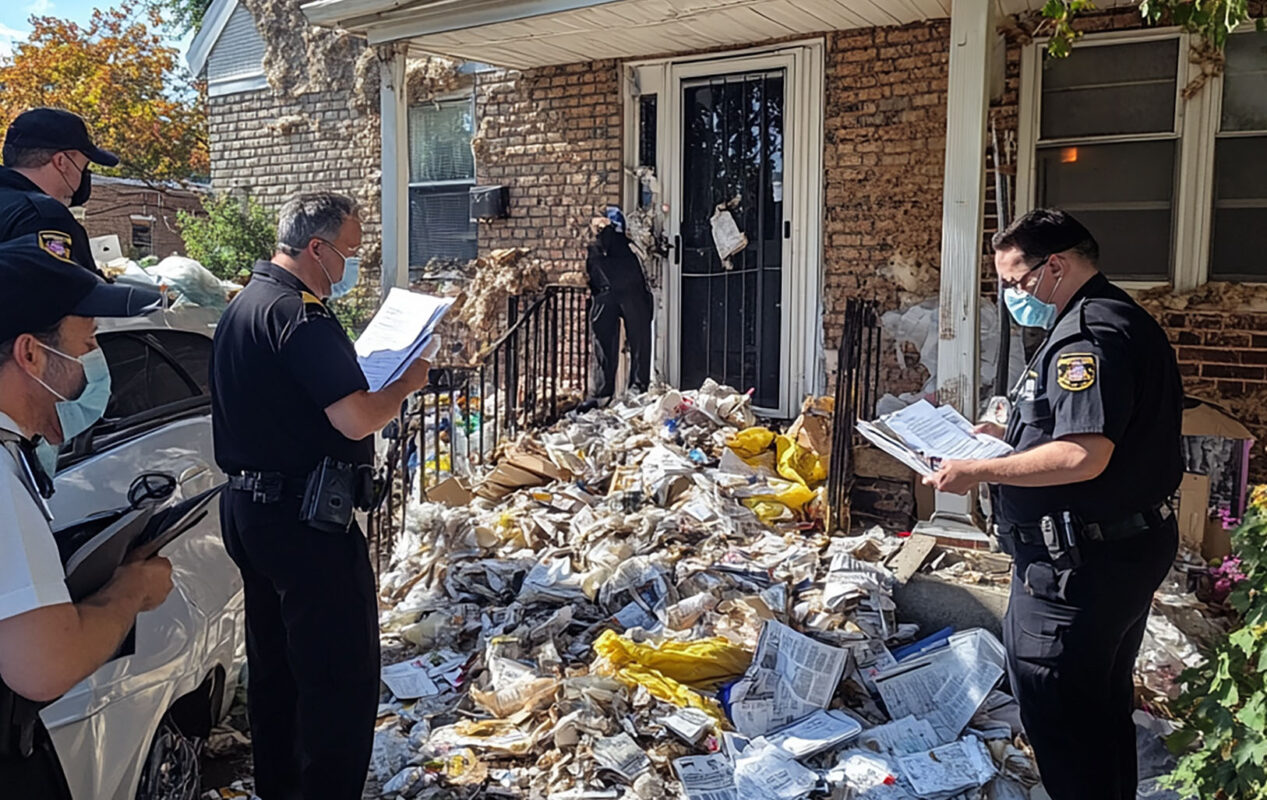Can Hoarding Get Your House Condemned? What You Need to Know
Discover the dangers of hoarding, how it can lead to a home being condemned, and what steps you can take to prevent it.
Introduction
Hoarding isn’t just about having too much clutter—it can become a dangerous situation with serious consequences. In extreme cases, hoarding can cause a house to become so unsafe that it’s condemned by local authorities. While this might sound drastic, it’s a reality that many hoarders and their families face.
But how does this happen? Can hoarding really lead to a home being condemned? In this blog, we’ll explore how hoarding creates hazardous living conditions, what it means for a house to be condemned, and what you can do to prevent it.
What Is Hoarding?
Hoarding is more than just having a messy home or too many things. It’s a mental health condition characterized by an overwhelming desire to collect items, often to the point where living spaces become unusable. People with hoarding disorder often struggle to let go of items, even when they serve no practical purpose. Over time, their possessions pile up, creating serious risks for their health and safety.
Signs of Hoarding Disorder:
- Accumulation of excessive items that have little or no value.
- Inability to discard items, even when space runs out.
- Living spaces becoming so cluttered they are no longer functional (e.g., kitchens and bathrooms are blocked).
- Emotional distress when faced with the idea of getting rid of possessions.
2-6%
Prevalence: Approximately 2-6% of the U.S. population struggles with hoarding disorder, according to the International OCD Foundation. This equates to millions of individuals who may need assistance with cleanouts.
1 in 10 homes
Approximately 1 in 10 homes in the U.S. are condemned due to hoarding or severe clutter. Estimates suggest 100,000 to 300,000 homes are condemned annually due to safety risks, including structural damage, fire hazards, and unsanitary conditions. This statistic highlights the seriousness of hoarding and the importance of effective cleanout services.
50%
Professional Assistance: According to the American Psychiatric Association, nearly 50% of individuals with hoarding disorder seek help for their hoarding issues, often requiring professional services for cleanouts, organization, and emotional support.
80%
Impact on Living Conditions: Research from the National Study of Hoarding Disorder found that nearly 80% of individuals with hoarding disorder lived in homes that were unsafe or unhealthy due to the accumulation of clutter, making cleanouts crucial for their safety and well-being.
When Does Hoarding Become Dangerous?
At first glance, hoarding might seem like just a personal issue, but the truth is, it can have devastating effects on the home and those living in it.
Health Hazards: Piles of clutter can hide mold, pests, and dust, leading to severe health problems. Unsanitary conditions can develop, especially if items block access to sinks, bathrooms, or cleaning supplies.
Fire Hazards: One of the biggest risks in hoarding situations is fire. Clutter can block exits and overwhelm spaces, making it difficult for residents to escape or for emergency responders to enter. Piles of paper, fabric, or other materials also act as fuel for fires, creating a very dangerous environment.
Structural Damage: Over time, hoarding can lead to structural problems in the home. Heavy piles of items can cause floors to sag or even collapse. Moisture buildup can lead to rotting wood, damaged walls, and broken windows.
Impact on Neighbors: Hoarding doesn’t just affect the person living in the home—it can also affect neighbors. Pests, odors, and potential fire hazards can spread beyond the walls of the hoarder’s house, causing risks to the entire community.
What Does It Mean for a House to Be Condemned?
When a house is condemned, it means that local authorities have determined it is no longer safe for human occupancy. Condemnation isn’t just about cosmetic issues—it’s a legal ruling that the structure poses a risk to the health and safety of its occupants or the surrounding area.
Reasons for Condemnation: Houses can be condemned for a variety of reasons, including:
- Severe unsanitary conditions (pests, mold, human or animal waste).
- Fire hazards (blocked exits, flammable clutter).
- Structural instability (collapsing floors, weak ceilings, or walls).
- Violations of building or safety codes.
Process of Condemnation: Condemning a house is a serious decision. Authorities will typically inspect the home, document the violations, and provide warnings or citations to the owner. If conditions don’t improve after these warnings, the house may be condemned, and the owner may be required to vacate the premises.
How Hoarding Can Lead to a House Being Condemned
Unfortunately, severe hoarding often creates the exact conditions that lead to condemnation. When hoarding blocks exits, creates fire risks, or damages the structure of a home, it’s only a matter of time before authorities intervene.
Case Studies of Hoarding-Related Condemnation:
There are many real-life cases where hoarding has led to homes being condemned.
One of the most heartbreaking hoarding cases we encountered involved a woman whose situation had spiraled completely out of control. Her family, overwhelmed and unable to help, had cut off all contact. She was left alone to manage her home, which had become so cluttered and unsanitary that it was uninhabitable. In fact, the condition of the house had deteriorated to the point that she was living in her car—a car that was just as cluttered as her home.
When she called us in to help, it was immediately clear how severe the situation was. The house was filled with trash, old items, and waste. We started the difficult process of cleaning out the home, but every day, the woman would go to the dumpster and pull out items we had discarded. She couldn’t bear to let go of anything, no matter how damaged or unsanitary it was. She knew she needed to clean, and that is why she called us, she just couldn't see her way clear to let anything go.
After two weeks of working closely with her, we finally managed to fill the dumpster. But when the company came to haul it away, she stood in front of it, armed with a broom, refusing to let them take it. What was inside? Only trash contaminated with dog waste and maggots. Despite the state of the items, her attachment was too strong.
It was an extreme and tragic situation that highlights just how deeply emotional hoarding can be. This case wasn’t just about cleaning out a house—it was about working with someone whose life had become intertwined with the things around her. It’s a reminder of how complex hoarding disorder is, and how critical it is to provide support, understanding, and patience to those affected.
Common Violations in Hoarding Cases:
- Blocked exits: Emergency exits, windows, and doors are blocked by piles of items.
- Fire hazards: Flammable materials like paper or fabric accumulate in large quantities, posing fire risks.
- Structural concerns: The sheer weight of accumulated items can cause floors and ceilings to give way.
Hoarding violations often begin when something noticeable catches the attention of others. Authorities don’t conduct random inspections; they are typically alerted by what they see—or even smell—from the outside. Piles of clutter in the yard, broken windows, or unpleasant odors seeping from the home can raise concerns and prompt neighbors or passersby to report the situation, leading to an inspection.
However, simply keeping the outside of the home clean or masking odors while the inside remains overwhelmed with clutter isn’t a real solution. Isolating oneself indoors doesn’t address the underlying problem—it can actually make things worse. Hoarding isn’t just a physical issue; it can lead to emotional distress and social withdrawal. If you recognize these patterns, it’s a sign that support is needed—not just to avoid violations, but to improve your quality of life and well-being.
Steps Authorities Take:
When it comes to addressing hoarding situations, authorities typically follow a systematic process to ensure the safety of the occupants and the surrounding community. The process often begins when someone notices signs of hoarding and reports them. This can include visible issues like clutter spilling into yards, broken windows, or unpleasant odors emanating from the home. A concerned neighbor, a friend, or even a delivery person may bring these issues to the attention of local officials.
-
Initial Assessment: Once a report is made, authorities may conduct an initial assessment. This might involve a social worker, health inspector, or housing inspector visiting the property to observe conditions firsthand. They look for signs of neglect, such as excessive clutter, unsanitary living conditions, and potential safety hazards.
-
Documentation: If violations are evident, officials will document their findings, often taking photographs and noting specific concerns. This documentation is crucial for any future legal actions or interventions that may be required.
-
Warning and Notification: Authorities typically issue warnings to the homeowner, outlining the violations and the steps they need to take to rectify the situation. This might include a timeline for cleaning up the property and addressing safety concerns. It’s important to note that these warnings aim to give the homeowner an opportunity to make necessary changes before further action is taken.
-
Follow-Up Inspections: After the initial warning, authorities will schedule follow-up inspections to evaluate whether the homeowner is making progress. If improvements are not made within the specified timeline, further action may be taken.
-
Involvement of Social Services: In many cases, authorities will involve social services to assess the mental health of the homeowner. This is a critical step, as hoarding often stems from underlying psychological issues that require professional intervention. Social workers can provide resources and support to help the homeowner begin the process of recovery.
-
Legal Action and Condemnation: If the homeowner fails to comply with warnings or if the situation worsens, authorities may take legal action. This can lead to a condemnation of the property, where the home is deemed unsafe for occupancy. In such cases, the homeowner may be forced to vacate the premises, and the property can be sealed or demolished if necessary.
-
Cleanup and Remediation: In the worst-case scenarios, authorities may oversee a cleanup of the property, often involving professional hoarding cleanout services. These services are crucial for removing hazardous materials and restoring the home to a safe living condition.
By understanding the steps authorities take in response to hoarding situations, individuals can better grasp the seriousness of the issue. It’s essential for anyone struggling with hoarding to recognize that help is available. Seeking assistance proactively can prevent legal consequences and significantly improve overall well-being.
Can a Condemned House Be Saved?
A condemned house can be saved—but it requires serious intervention. Homeowners may need to hire professional cleanout services and make significant repairs to bring the house up to code.
Reversing Condemnation: If authorities deem a home unsafe due to hoarding, it’s possible to reverse the condemnation, but only if the owner complies with all regulations. This often includes removing clutter, addressing structural issues, and passing follow-up inspections.
TIP: If your initial inspection
The Role of Professional Cleanout Services: Hoarder cleanouts are not like regular cleaning jobs. These situations often require professionals who specialize in safely clearing out massive amounts of items, addressing potential biohazards, and restoring the home to a livable state. Cleanout services can help prevent a home from reaching the point of condemnation or even reverse the decision if the cleanout is done thoroughly and properly.
Important Tip: Addressing Hidden Hazards After a Cleanup
After a hoarding cleanup, it’s crucial to conduct a thorough inspection of the home for any underlying safety issues that may not have been immediately visible. In one case we encountered, a woman’s house was condemned due to severe hoarding. After we completed the cleanup, we uncovered additional hazards, including exposed wiring that was not up to code and loose electrical outlets hanging from the walls.
The significant improvements made during the cleanup encouraged the homeowner despite the warning we gave her about the other structural and electrical issues we encountered. She felt confident that the cleaned spaces would suffice. However, when she called in the inspectors, she passed the original items on the violations list but was cited for 18 additional violations that needed to be addressed before she could move back in.
This experience underscores the importance of not only cleaning out the clutter but also ensuring that the home meets safety standards. Always follow up with a comprehensive inspection of the property, looking for any hidden hazards such as:
- Exposed wiring or electrical issues
- Plumbing problems
- Structural concerns (e.g., sagging ceilings, mold)
- Fire hazards (e.g., blocked exits, flammable materials)
Addressing these issues proactively can save time, money, and stress in the long run. If you’re unsure about the safety of your home after a cleanup, consider hiring an independent inspector to identify any problems before inviting the inspectors back from local authorities.
Conclusion
Cleaning out a hoarded home is no small feat. Whether you choose to tackle it yourself or enlist the help of a professional team, following these steps will help make the process more manageable. If you find yourself overwhelmed at any point, don’t hesitate to reach out to a hoarder cleanout service that can provide both physical help and emotional support. A clutter-free home—and a fresh start—is within reach.
Make new connections
Junk Removal & Move-In/Out Cleaning Services
At Clomax, we believe that building strong relationships with our clients is just as important as delivering top-notch junk removal services. By understanding your unique needs, we strive to provide personalized solutions that not only clear out unwanted items but also make room for new possibilities. Whether it's a one-time service or ongoing cleanouts, we’re here to create connections that matter, ensuring each project is completed with care, efficiency, and a focus on sustainability. Let’s make new connections today and transform your space together.
[bafg id="12431"]
See the dramatic change as this living room is cleared of all belongings during an estate cleanout. The before-and-after images highlight the complete transformation, turning a cluttered space into a blank slate, ready for new beginnings.
[bafg id="12438"]
Observe the striking difference in this living room after a thorough estate cleanout. The before image shows a room filled with years of memories, while the after image reveals a fresh, empty space, cleared and prepared for its next chapter.
[bafg id="12442"]
See the difference in this apartment living room after a sensitive estate cleanout. While some personal items remain, the space has been thoughtfully cleared and reorganized, making it more manageable and comfortable for the resident to continue living in..











